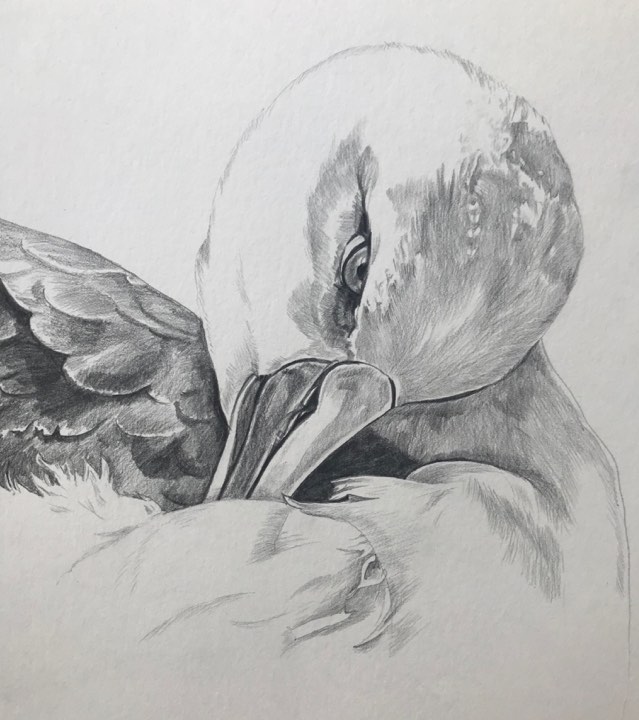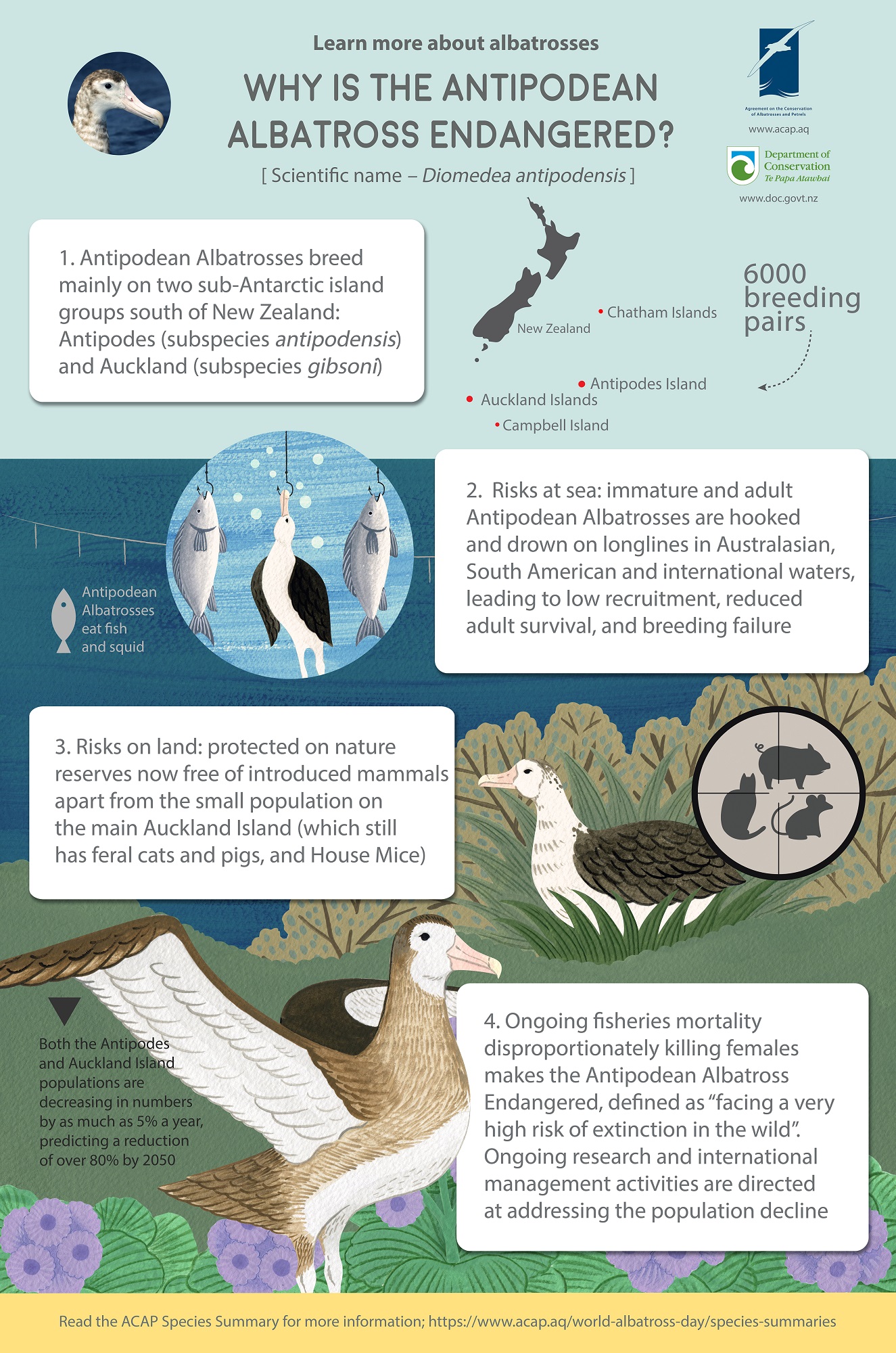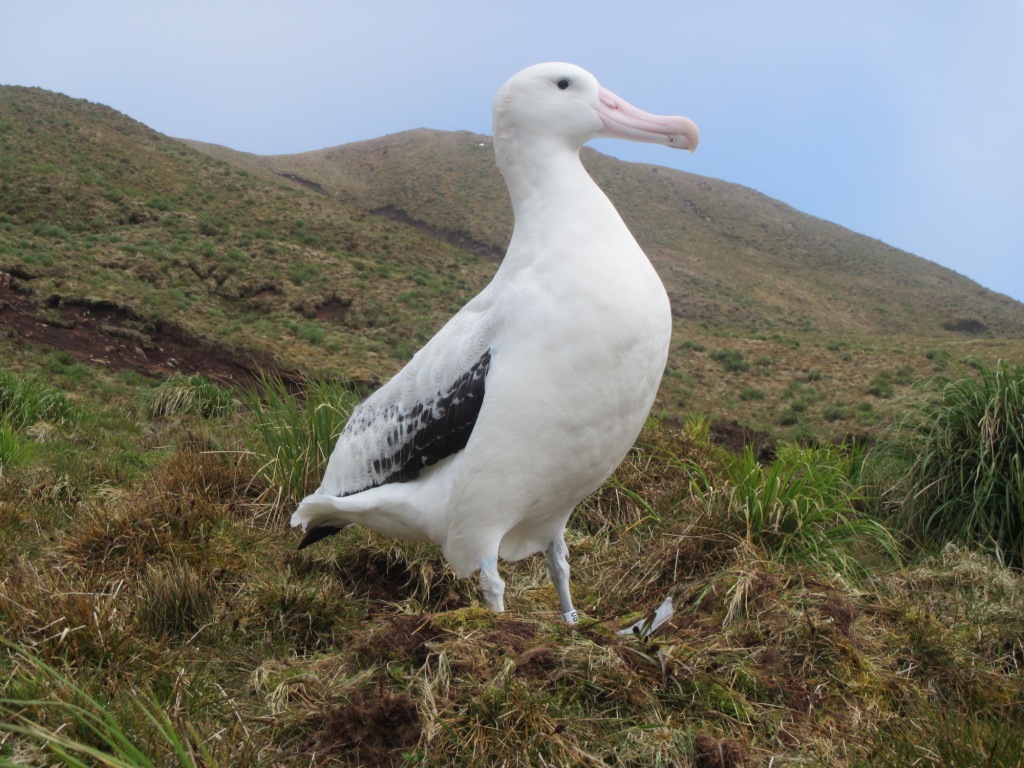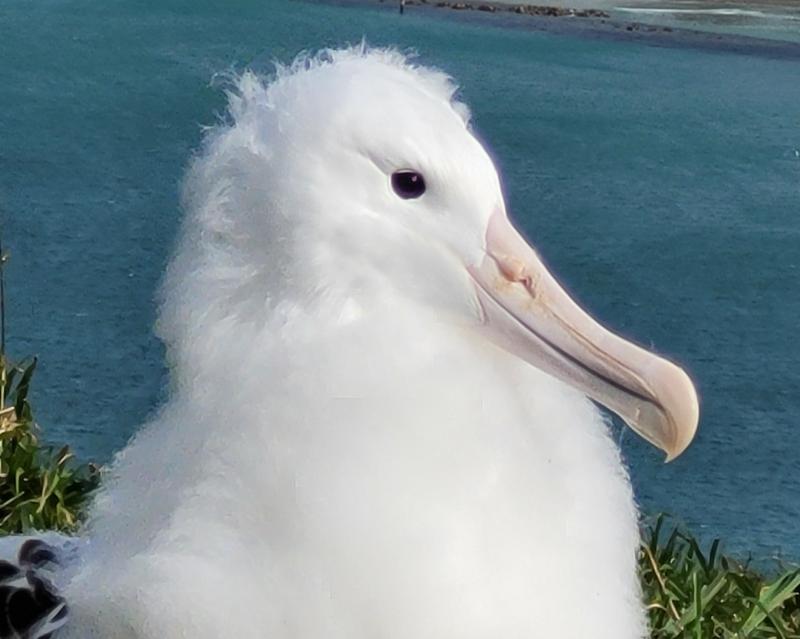
One of the 33: Manaaki, the 2022/23 Royal Cam chick, photograph by Sharyn Broni, Department of Conservation
All 33 chicks raised this season in New Zealand’s mainland colony of globally Endangered and Nationally Vulnerable Northern Royal Albatrosses Diomedea sanfordi at Pukekura/Taiaroa Head have now fledged from the headland and have begun life at sea for the next few years. All 33 chicks were uniquely colour banded.
One of the chicks to fledge was Manaaki, the 2022/23 Royal Cam chick; a male which received its bands on World Albatross Day on 19 June. Previously, the highest number of chicks fledging was from the 2020/2021 season with 30 chicks. Watch a video of a 2022/23 chick close to fledging by Laura Findlay here.
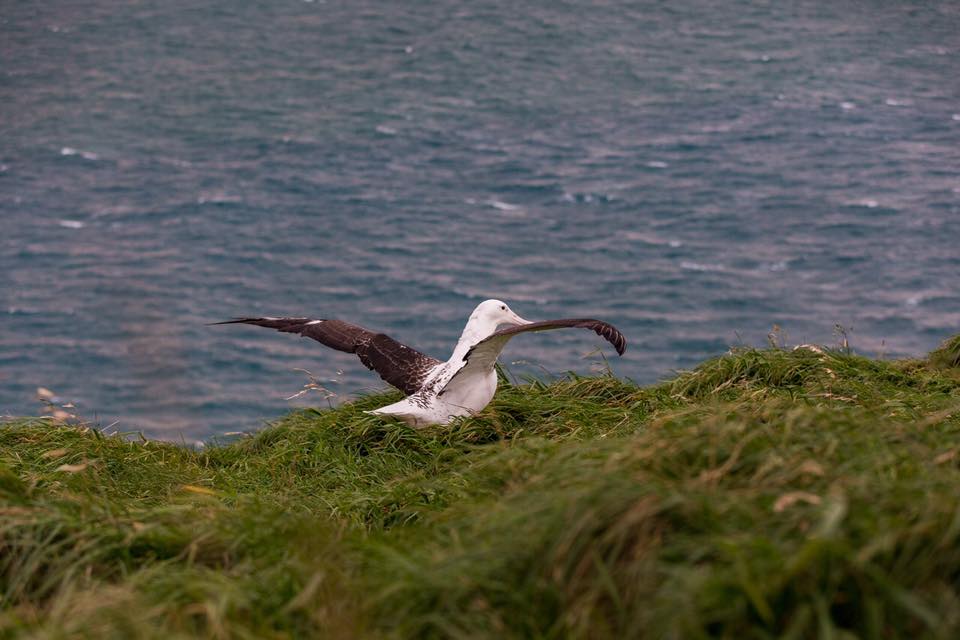
Chocks away! A 2022/23 chick is about to fledge from Taiaroa Head
Meanwhile, birds of the new 2023/24 season have started arriving in the colony; eggs will be laid over November/December. The Northern Royal Albatross is a biennially breeding species, as are all six great albatross species in the genus Diomedea, with essentially two cohorts breeding in alternate years.
John Cooper, Emeritus Information Officer, Agreement on the Conservation of Albatrosses and Petrels, 05 October 2023

 English
English  Français
Français  Español
Español 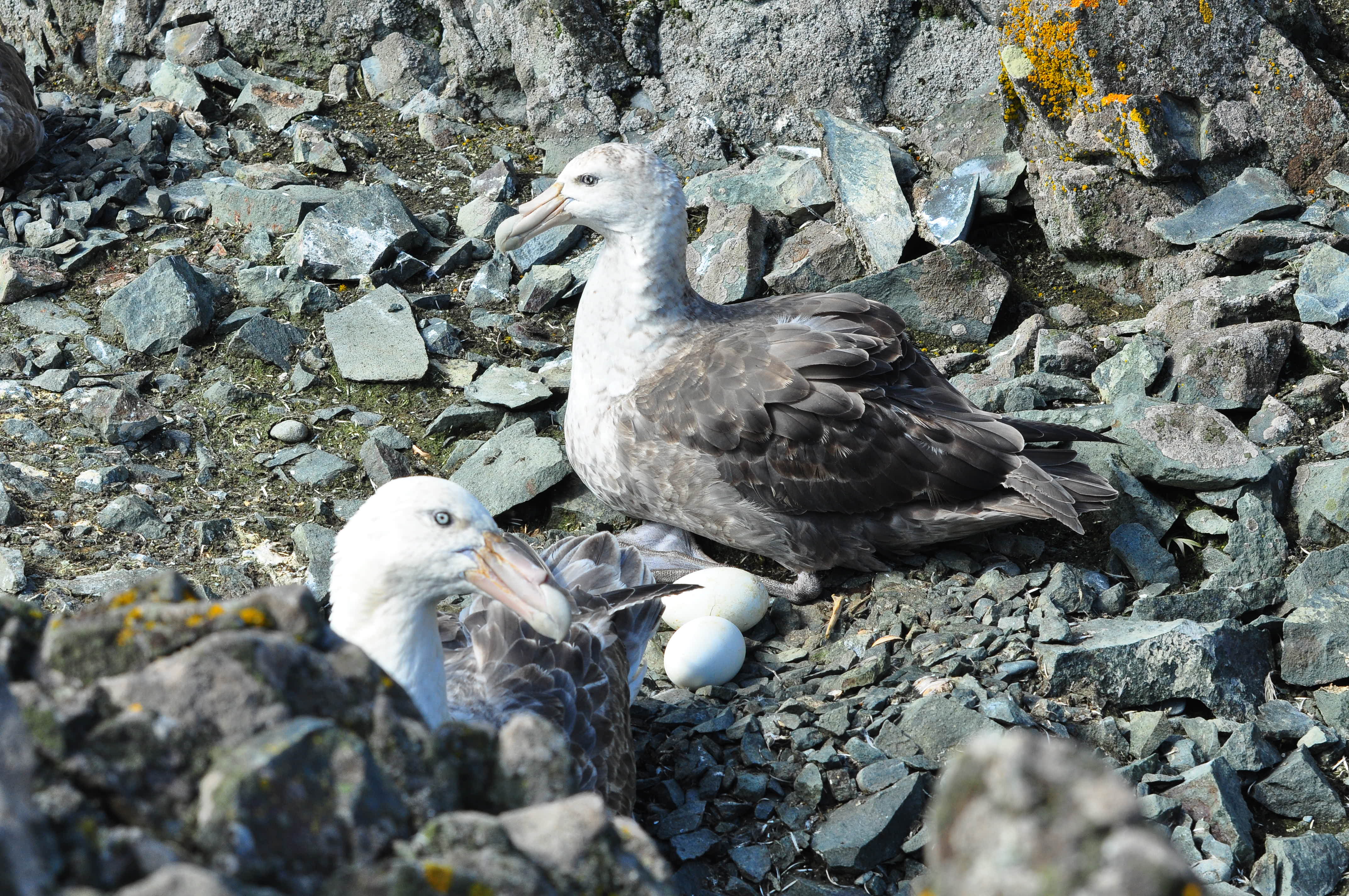 Southern Giant Petrels nesting at Harmony Point, Nelson Island in maritime Antarctica; photograph by Julia Finger. Giant petrels were identified in the risk assessment published by the SCAR Antarctic Wildlife Health Network (AWHN) as at risk of becoming infected by HPAI, and transporting the virus.
Southern Giant Petrels nesting at Harmony Point, Nelson Island in maritime Antarctica; photograph by Julia Finger. Giant petrels were identified in the risk assessment published by the SCAR Antarctic Wildlife Health Network (AWHN) as at risk of becoming infected by HPAI, and transporting the virus.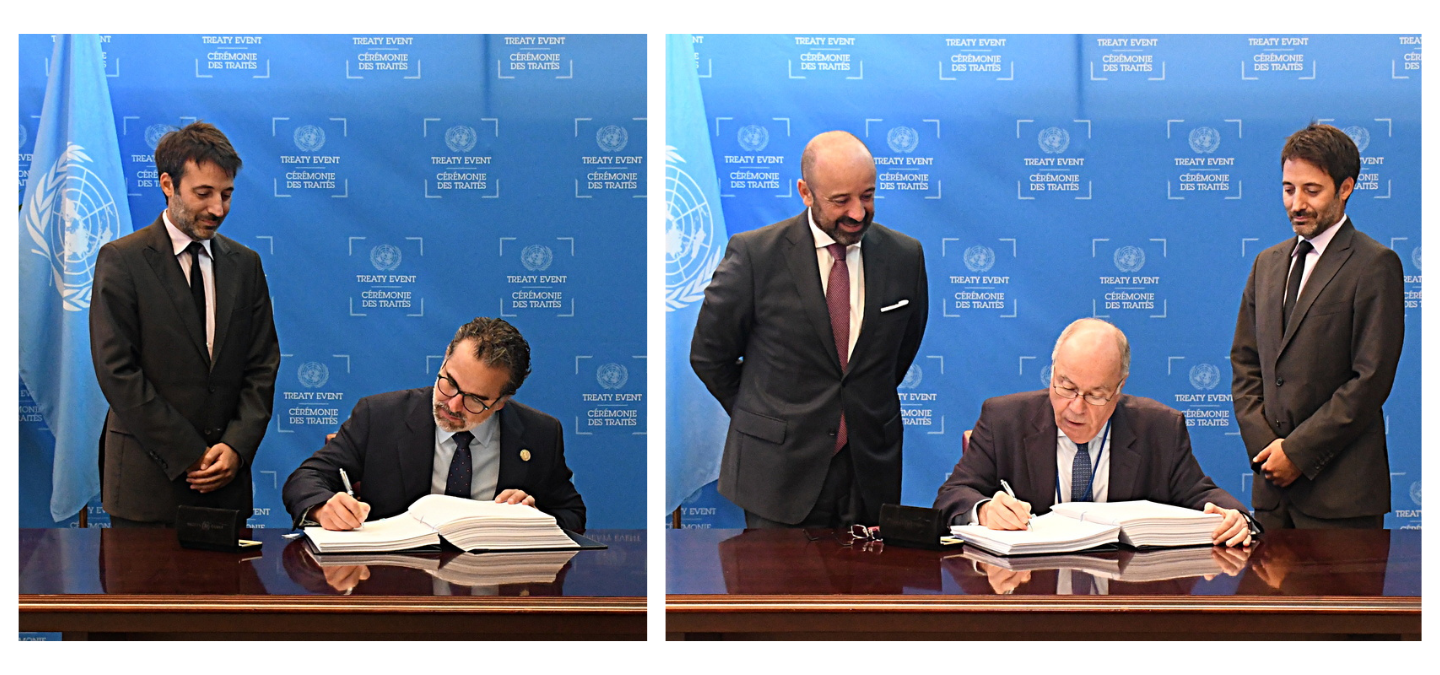 ACAP Parties, Ecuador and Brazil, have both signed the BBNJ Agreement. Pictured (left - right) H.E. Mr. Gustavo Manrique Miranda, Minister of Foreign Affairs and Human Mobility of the Republic of Ecuador and H.E. Mr. Mauro Luiz Iecker Vieira, Minister for Foreign Affairs of the Federative Republic of Brazil
ACAP Parties, Ecuador and Brazil, have both signed the BBNJ Agreement. Pictured (left - right) H.E. Mr. Gustavo Manrique Miranda, Minister of Foreign Affairs and Human Mobility of the Republic of Ecuador and H.E. Mr. Mauro Luiz Iecker Vieira, Minister for Foreign Affairs of the Federative Republic of Brazil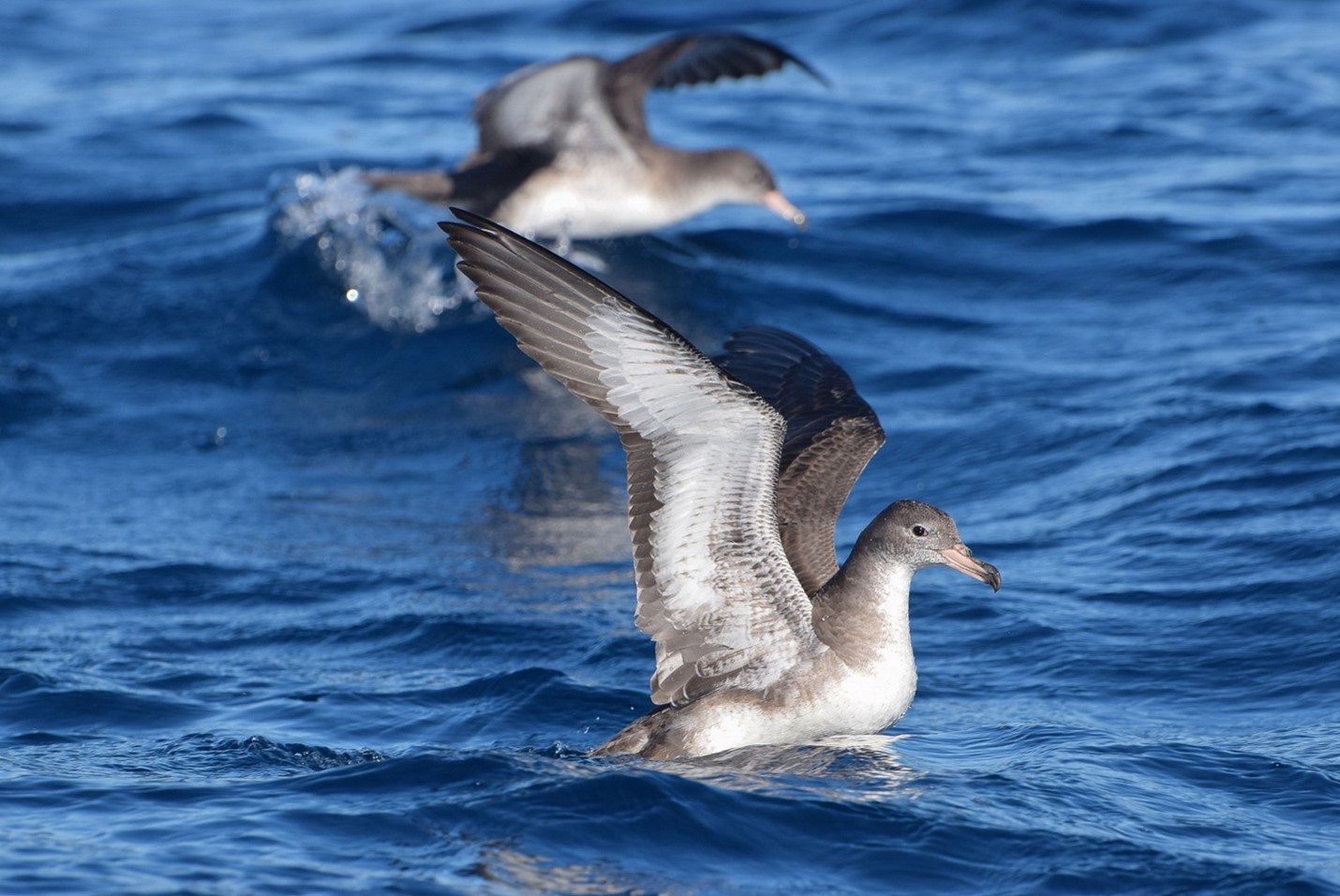 Pink-footed Shearwaters inside the Coastal Marine Protected Area, Mar de Juan Fernández; photograph by Héctor Gutiérrez Guzmán
Pink-footed Shearwaters inside the Coastal Marine Protected Area, Mar de Juan Fernández; photograph by Héctor Gutiérrez Guzmán